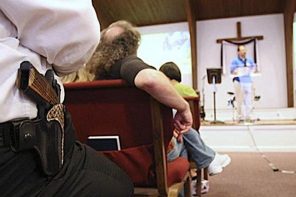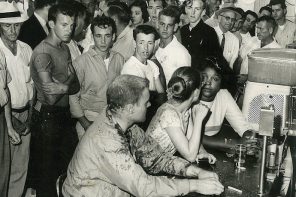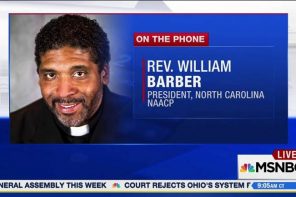The recent “Faith and American Politics Survey,” a survey sponsored by Faith in Public Life and conducted by our firm, Public Religion Research, contains a fresh, in-depth look at youth, religion, and politics in the 2008 election cycle. One of the most interesting insights revealed by the survey was a new look at the fate of the so-called “God gap,” the high correlation between rates of religious service attendance and partisan vote. Whereas the relationship between religious attendance and vote was nearly linear in 2004, our new survey found that monthly church attenders—a critical group (15% of registered voters) that John Kerry lost to George W. Bush 49% to 51%—are now supporting Barack Obama over John McCain 60% to 32%.
A Quick Look Back at 2004
In the wake of the 2004 elections, we heard much about the “God-gap.” In 2004, Bush captured the vast majority of voters who were in the pews every week, and Kerry remained the favorite among those who seldom or never attended religious services. Further analysis revealed that this correlation was not a byproduct of other variables. Regression analysis on the 2004 exit polls indicates that religious attendance was one of the strongest independent predictors of vote—stronger than a variety of other possible predictors such as age, gender, income, and education.
In 2004, voters who attended religious services more than once a week were six-times more likely to support Bush than those who never attended. If you compare this gap to the more familiar “gender gap,” the power of religious attendance becomes evident: in 2004, men were only one and a half times as likely to support Bush than women. In the general population, the only demographic variable that rivaled religious attendance was race (specifically, being African American), with religious attendance ranking as the second strongest independent predictor of vote. Significantly, among whites, religious attendance was the strongest single predictor of vote in 2004.
Monthly Attenders Swing for Obama in 2008
In 2008, the pattern of support in the general population among those who attend most and least often has changed little. Republican candidate John McCain leads Democrat Barack Obama 54% to 38% among voters who attend religious services once a week or more, and Obama leads McCain 61% to 29% among voters who attend seldom or never. Among the general population, there is one major difference, however, between 2004 and 2008. This year, six-in-ten voters who attend services once or twice a month are now supporting Obama, an 11-point swing from 2004.
A look at the young adult vote also suggests a break in the pattern. Overall, young adults are supporting Obama by a significant margin (59% to 35%). However, Obama’s lead is concentrated among young voters who attend religious services monthly or less (once or twice a month, a few times a year, seldom, or never). Among this group, Obama holds a commanding 69% to 25% lead. Moreover, this group makes up nearly two-thirds (65%) of the young adult population, a significantly higher proportion than the general population in which this group of less frequent church attenders accounts for 56% of the population.
Another reason to believe that the God-gap in past elections will look different this year is that public perceptions of the candidates appears to be following a new script. Since 2004, surveys have consistently found that Republicans maintain a significant lead over Democrats when it comes to being perceived as “friendly” to religion. A recent Pew survey (08/2008) found that a majority (52%) of Americans say the Republican Party is friendly towards religion, compared to just 38% who say the Democratic Party is friendly, a 14-point advantage. However, in 2008 we find that Obama significantly outpaces his party and is perceived to be more friendly towards religion than McCain (49% to 45%).
Lines of causality are difficult to establish, but this friendliness to religion factor may play a role among the monthly attenders. Despite lower levels of attendance than some Americans, this group cares deeply about religion. Fifty-four percent of monthly attenders who are registered voters say that religion is very important in their lives, compared to 59% of all registered voters. Seven-in-ten (72%) say that it is important or somewhat important for candidates to be able to talk comfortably about religion, a rate nearly identical to all registered voters (70%). And in this key group, a strong majority of voters perceive Obama to be “friendly” to religion (61%)—higher than any other religious attendance group—while less than half (49%) think McCain is friendly to religion.




